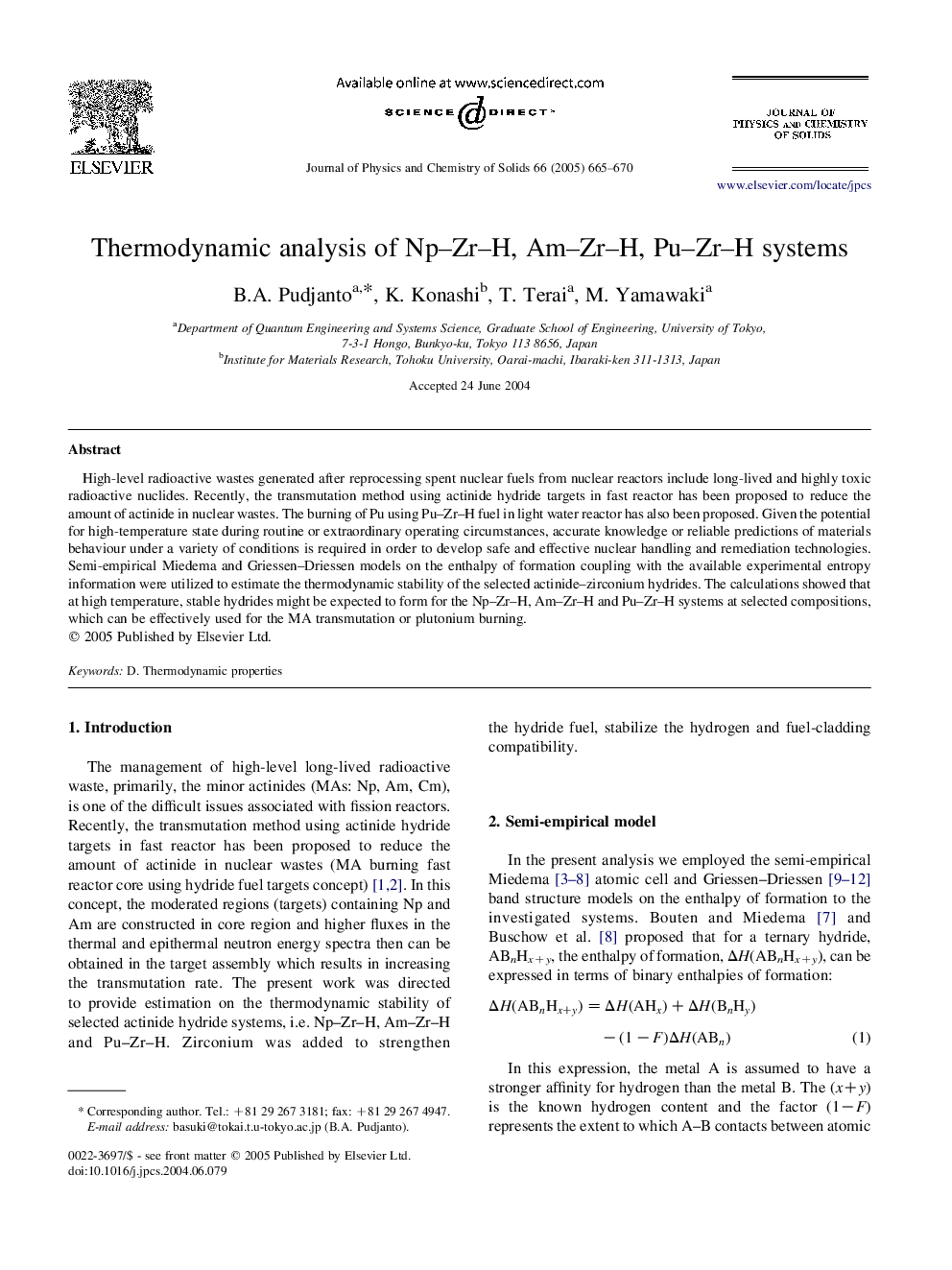| Article ID | Journal | Published Year | Pages | File Type |
|---|---|---|---|---|
| 9781840 | Journal of Physics and Chemistry of Solids | 2005 | 6 Pages |
Abstract
High-level radioactive wastes generated after reprocessing spent nuclear fuels from nuclear reactors include long-lived and highly toxic radioactive nuclides. Recently, the transmutation method using actinide hydride targets in fast reactor has been proposed to reduce the amount of actinide in nuclear wastes. The burning of Pu using Pu-Zr-H fuel in light water reactor has also been proposed. Given the potential for high-temperature state during routine or extraordinary operating circumstances, accurate knowledge or reliable predictions of materials behaviour under a variety of conditions is required in order to develop safe and effective nuclear handling and remediation technologies. Semi-empirical Miedema and Griessen-Driessen models on the enthalpy of formation coupling with the available experimental entropy information were utilized to estimate the thermodynamic stability of the selected actinide-zirconium hydrides. The calculations showed that at high temperature, stable hydrides might be expected to form for the Np-Zr-H, Am-Zr-H and Pu-Zr-H systems at selected compositions, which can be effectively used for the MA transmutation or plutonium burning.
Related Topics
Physical Sciences and Engineering
Materials Science
Electronic, Optical and Magnetic Materials
Authors
B.A. Pudjanto, K. Konashi, T. Terai, M. Yamawaki,
